
“With Berlin’s line 300, Fridays for Future is happening every day now”. With this slogan, Berlin’s public transport operator BVG inaugurated the new electric bus line 300 on 4 August 2019 which is mainly operated by electric buses. The new line connects several important tourist sights and public transport hubs within the city, connecting the Philharmony, the Brandenburg Gate, the famous Unter den Linden boulevard, Alexanderplatz and the Berlin Wall memorial “East Side Gallery” at Warschauer Straße. On the first day of operation, up to eight electric buses were in operation on line 300.
Further to this, Berlin’s public transport operator made numerous changes to the bus network that day on the line 245 and the airport bus TXL.
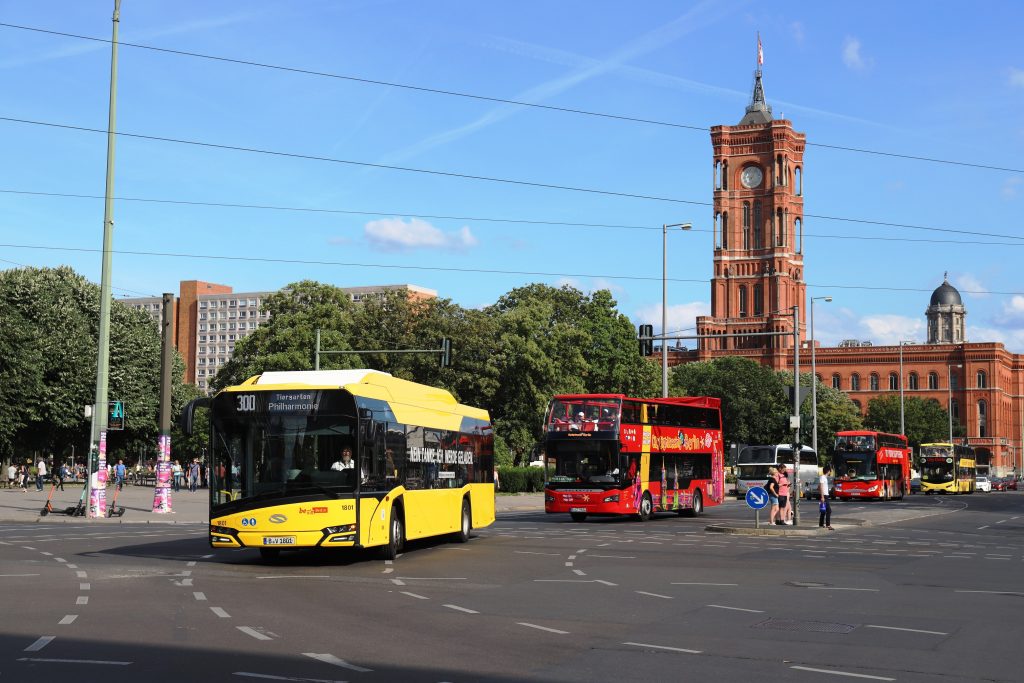
30 new e-buses for Berlin
By the end of August 2019, 30 electric buses (12 m) will have been delivered to Berlin. Mercedes Benz supplies 15 eCitaro and Solaris 15 Urbino Electric. These buses undergo several weeks of acceptance and testing. After the testing phase, the vehicles are operated both on the line 300 and on several bus lines in the eastern city center, e.g. the lines 142 and 347 in mixed traffic with diesel buses.
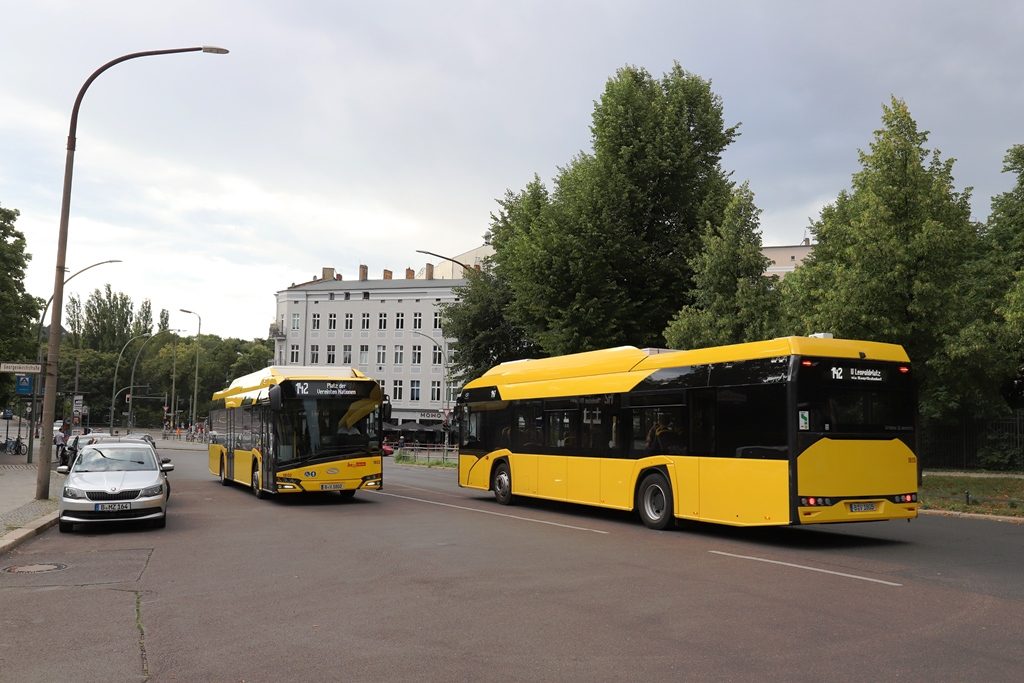
Following the launch of four Solaris E-buses on line 204 with inductive charging provided by Bombardier / Primove in 2015, a gradual introduction of electric buses on all bus lines is planned for the upcoming years. The current batch includes the mentioned 30 electric buses in 2019. By 2020, 90 more Solaris e-buses (12 m) and 17 Solaris articulated e-buses will be delivered to Berlin. The electric articulated buses will be used as part of the BMVI (Federal ministry of transport and digital infrastructure) E-MetroBus research project on line 200. The recharging of these vehicles takes place at the terminus with a High Power charging stations (450 kW). Eventually, according to the Berlin Mobility Act, the entire bus fleet will be converted to locally emission-free buses by 2030. According to press reports, the introduction of trolleybuses in the suburban area of Spandau is also being considered. The trolleybus network would consist in four lines with a total length of 25 kilometers. Later, this network could be extended to Zoo Station and the areas of Märkische Viertel and Kladow.
The new line 300
The new line 300 (Philharmonic – S + U Warschauer Straße) passes by many tourist attractions such as the Alexanderplatz, the Berliner Cathedral, the new castle and the Brandenburger Gate as well as the Unter den Linden boulevard. Line 200 will no longer pass via Unter den Linden, but via Leipziger Straße past the Red Town Hall. Together with the line N2 it replaces the M48 metro bus line which now ends at Mohrenstraße metro station .
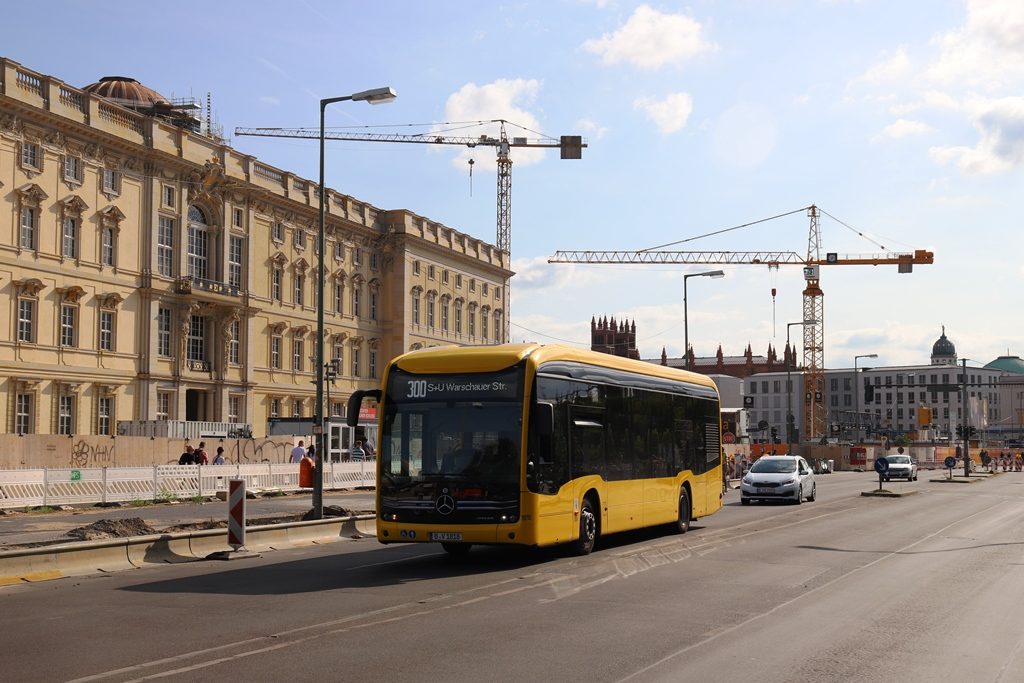
Fully electric Mercedes Benz eCitaro in front of the “new” rebuilt Berlin castle I Photo: UTM 
“No tank, I am being charged” – BVG marketing as an eye-catcher to highlight the fact of emission-free bus operation on line 300 I Photo: UTM 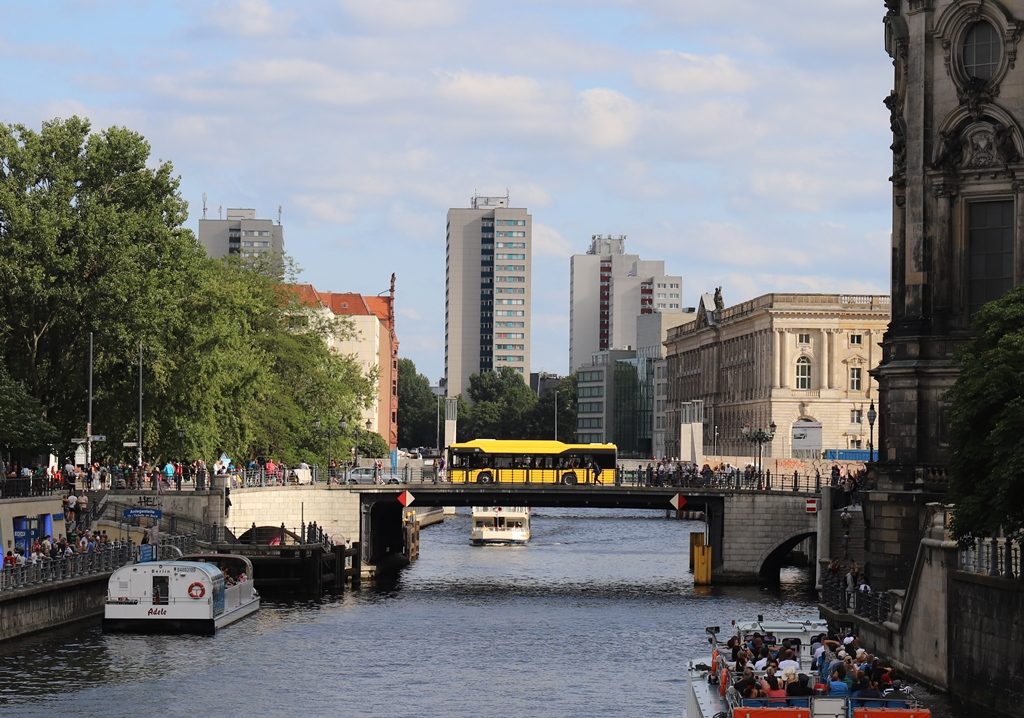
The modern e-buses look good in Berlin’s city centre – Solaris e-bus crossing the river spree next to the Berlin Cathedral I Photo: UTM
Berlin’s long-term e-bus strategy
Following the launch of four Solaris E-buses on line 204 with inductive charging provided by Bombardier / Primove in 2015, a gradual introduction of electric buses on all bus lines is planned for the upcoming years. The current batch includes the mentioned 30 electric buses in 2019. By 2020, 90 more Solaris e-buses (12 m) and 17 Solaris articulated e-buses will be delivered to Berlin. The electric articulated buses will be used as part of the BMVI (Federal ministry of transport and digital infrastructure) E-MetroBus research project on line 200. The recharging of these vehicles takes place at the terminus with a High Power charging stations (450 kW). Eventually, according to the Berlin Mobility Act, the entire bus fleet will be converted to locally emission-free buses by 2030. According to press reports, the introduction of trolleybuses in the suburban area of Spandau is also being considered. The trolleybus network would consist in four lines with a total length of 25 kilometers. Later, this network could be extended to Zoo Station and the areas of Märkische Viertel and Kladow.
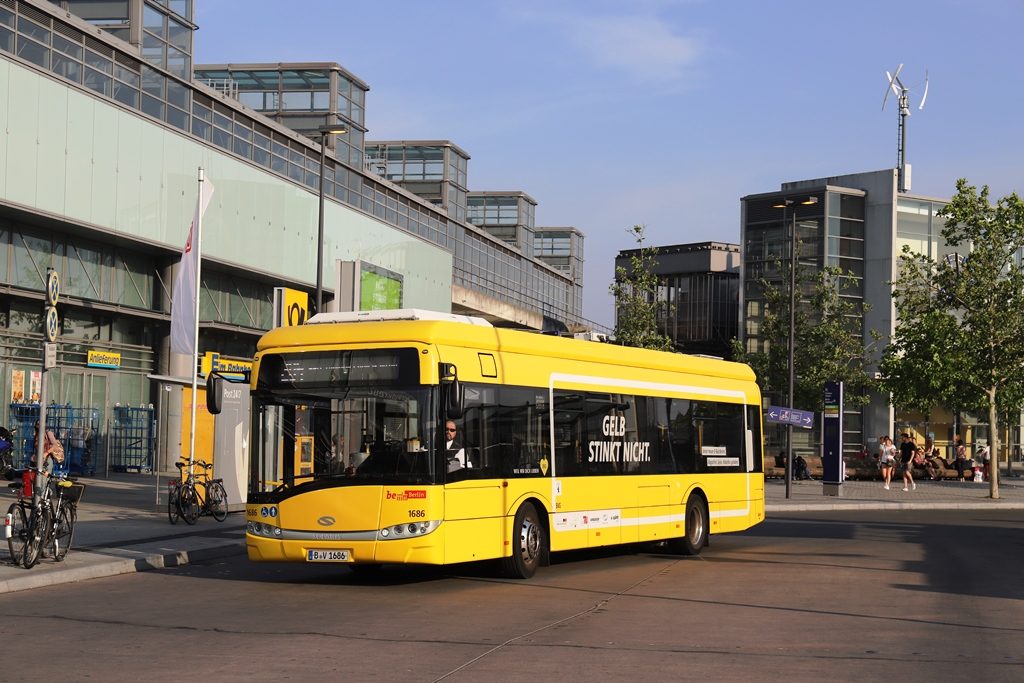
In operation since the year 2015 – four Solaris e-buses on line 204 at Berlin’s southern rail station Südkreuz I Photo: UTM 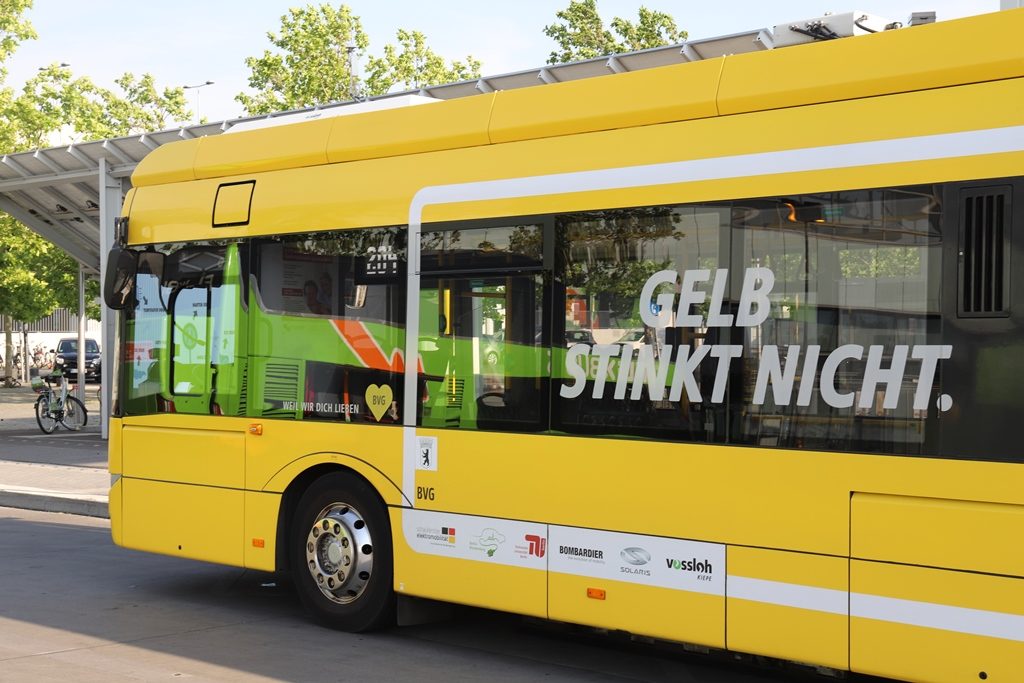
“Yellow doesn’t smell” – BVG marketing on a line 204 e-bus I Photo: UTM
Financing
The transition to emission-free buses is financed jointly by the federal government, the state of Berlin and BVG. BVG takes over all the costs that would have been incurred for comparable diesel buses. The extra costs compared to conventional diesel buses are borne entirely by the state of Berlin and by subsidies from the federal ministries. The financing of the vehicles and the resulting infrastructure costs is partly covered by funding programs of the Federal Ministry for the Environment, Nature Conservation and Nuclear Safety (BMU) and the Federal Ministry of Transport and Digital Infrastructure (BMVI).
04.08.2019
